I am standing in an ostentatiously nondescript modern building in Granton, a suburb of Edinburgh, next to a former marine biologist whose novels have sold in excess of 30m copies. We are looking at the backside of what resembles a large tartan onesie. The author is Diana Gabaldon, who is eagerly taking photographs on her mobile and gleefully saying she will be sending these to the person who does the costumes for Outlander, the TV series based on her cult sequence of novels that launched in 2014.
The suit in question is part of the National Museum of Scotland’s forthcoming exhibition about the Jacobites, a sequel to its successful Mary Queen of Scots show. Since Gabaldon’s novels, in a romance-meets-time-travel-meets-historical-fiction way, have dealt with the attempt by Charles Edward Stuart (AKA Bonnie Prince Charlie) to seize the British crown, they have invited her for a sneak preview.
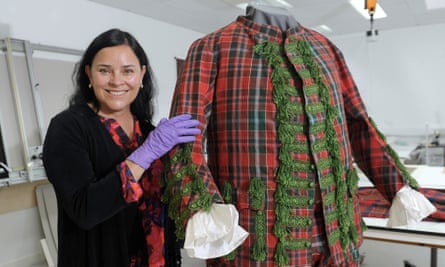
The costume is as paradoxical as Gabaldon’s own work. The reason we are so intently examining its bum is that, as the curator points out, it is in a different tartan to the rest of the vestment. The person who wore it, one presumes, was of quite substantial girth and when – after a rambunctious dinner? – the hind end tore, a patch of a quite different pattern was inserted.
Even more curiously, the suit did not belong to a Highland chieftain. The jacket, trews and plaid, embroidered with green silk, were acquired by Sir John Hydne Cotton of Cambridgeshire, to wear when he visited Scotland in 1744 as part of the conspiracy to restore the House of Stuart. The tartan was symbolic, though not of loyalty to a clan, but to a cause. The Bonnie Prince himself, in the court-in-exile in Rome, frequently appeared in what was called “the garb of old Gaul” to signify his claim to the throne.
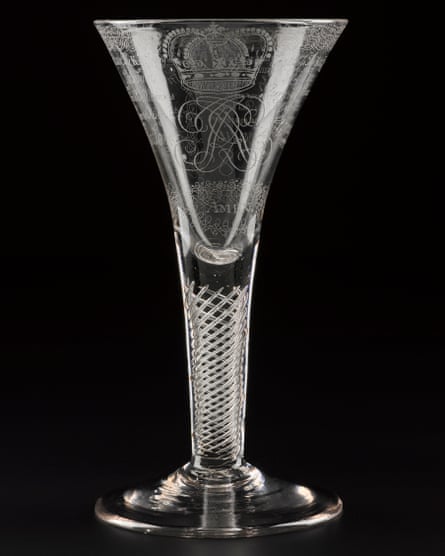
It is the kind of mixed-up detail that, I venture, must frustrate a novelist dealing with the past. “Yes,” smiles the American author, “although I’ve never been the kind of writer who thinks I’ve done my research and you, the reader, are going to pay for it.” We are shown around several other outfits – a strangely stained white jacket, a dress that outshines anything Pippa Middleton might wear – and again it overturns expectations. It was not a bunch of raggedy, bare-arsed Highlanders who very nearly overthrew the Hanoverian dynasty: it was an elite.
In the same room are papers. Gabaldon is fascinated by a document pardoning one of the Jacobites: a serial rebel, having been involved in three uprisings. Her own work carefully pairs the unsuccessful attempt to overthrow the political order in Britain and the successful revolution in America. How, as a non-Scot who has done so much to promote the country, does Gabaldon see contemporary Scotland? Despite being studiedly noncommittal, her feline frown says much. She’s more forthcoming on her own country: as a “libertarian Roman Catholic”, she didn’t feel she could side with either party in last year’s election.
In the room below, there are even more startling objects. Perhaps the most astonishing is the “travelling canteen” belonging to Charles. A silver vessel about the size of a coconut, made by Ebenezer Oliphant in Edinburgh, it opens to reveal cutlery, a corkscrew, a marrow scoop and that essential for any military campaign, a nutmeg grater. The canteen is decorated with not just thistles, but the symbol of the Order of the Thistle. It proclaims Charles’s belief in his right to the throne. Or perhaps demonstrates a fine craftsman’s wily awareness of how to flatter a pseudo-royal client.
In another corner, a curator is working on one of two “Amen” glasses. They are wonderfully engraved and rarer than a Stradivarius violin – only 37 are known to exist. After showing us the pieces, the young woman asks, slightly abashed, if she can get a selfie with Gabaldon, who immediately agrees. This is a phenomenon that I have watched with some curiosity. I told a few friends – mostly female and non-British, but living in Scotland – that I would be meeting Gabaldon. All of them took a fit of the vapours. “She is the reason I came here,” was a recurrent refrain.
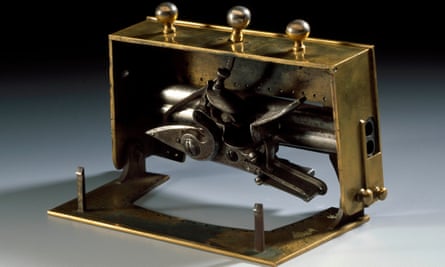
In the books, the time travel element means that the heroine Claire, a married second world war nurse who finds herself transported back to 18th-century Scotland, can be a feminist, while the Highland warrior she encounters there, Jamie Fraser, can be an alpha male. Speaking at one of the Homecoming Scotland events in 2009, Gabaldon made explicit – in slightly risque fashion and to the delight of the audience – the appeal of the Highland hero: “He can, you know, just lift the kilt up.” She says that that was always the point. You can’t do romance with milquetoasts, it seems.
One of the objects in the room is a strange sporran that can contain two flintlock pistols. Gabaldon studies it intently, later saying that this will certainly appear in future books. Historical fiction, as the writer JG Lockhart said, gloriously illustrates the margins: the past is fixed, there can’t be a victory for Charles at Culloden. So has she, I wonder, given the series a definitive ending? “I wrote the last scene of the last book 15 years ago,” she replies, after the kind of wry pause that seems to typify her approach.
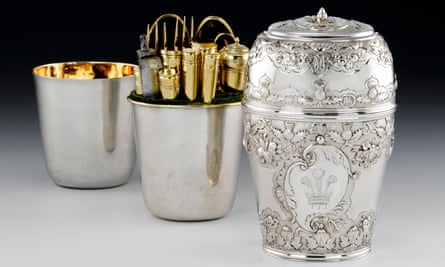
Gabaldon’s affection for Scotland is clear. She visits regularly, and has been involved with the TV version of Outlander, which is made by the US network Starz and was recently doing some filming in Edinburgh (where I had a fascinating conversation with a set worker, mostly about how the fruit and vegetables move around between different series until they decay). There is a strange irony in the fact that her initial inspiration was not Walter Scott, Robert Louis Stevenson or James Buchan, but Doctor Who, a quintessentially English programme. It was the slightly dumb Scottish assistant, plucked from the 18th century by the Tardis, that began the fascination.
If Doctor Who’s new showrunner, Chris Chibnall, wants a guest writer, Gabaldon would fit the bill nicely. She would like Outlander to be on the BBC, but I’m more interested in how the printed word and the screen version work in tandem. Might there be a Game of Thrones-style problem, when the visuals eventually outrun the words and more books are urgently called for? “No problem,” she giggles. “They’ll never outrun me.”
The Jacobite rebellions are an almost archetypally Scottish event. The boors and bores were victors, the glamorous failures. This exhibition should make such a romantic reading less credible. What it – and Gabaldon’s novels – reveal is that Jacobitism was not an isolated event in some glen, but a Europe-wide vying for power. It was not as simple as Highlands versus Lowlands, Scots versus English, or even Protestantism versus Catholicism. The Amen glasses were made in London under the very noses of the Hanoverians. Charles Stuart, after his defeat, was willing to forgo Catholicism in order to try again for the crown. He even visited London.
As we examine more texts and textiles, Gabaldon is in awe of how beautiful these things are: the Rebellion was clearly more in the key of Jane Austen than Braveheart. The fact that the usurpers could command such glorious things is an unspoken theme of the whole exhibition.
As I stand with Gabaldon in the slightly sterile room, I ask the curator what the significance of the green silk on the suit was. “We just don’t know,” she answers. Gabaldon raises an eyebrow. I have no doubt that those green silks will soon be turning up in her fiction.
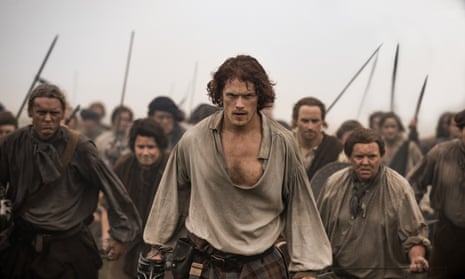
Comments (…)
Sign in or create your Guardian account to join the discussion